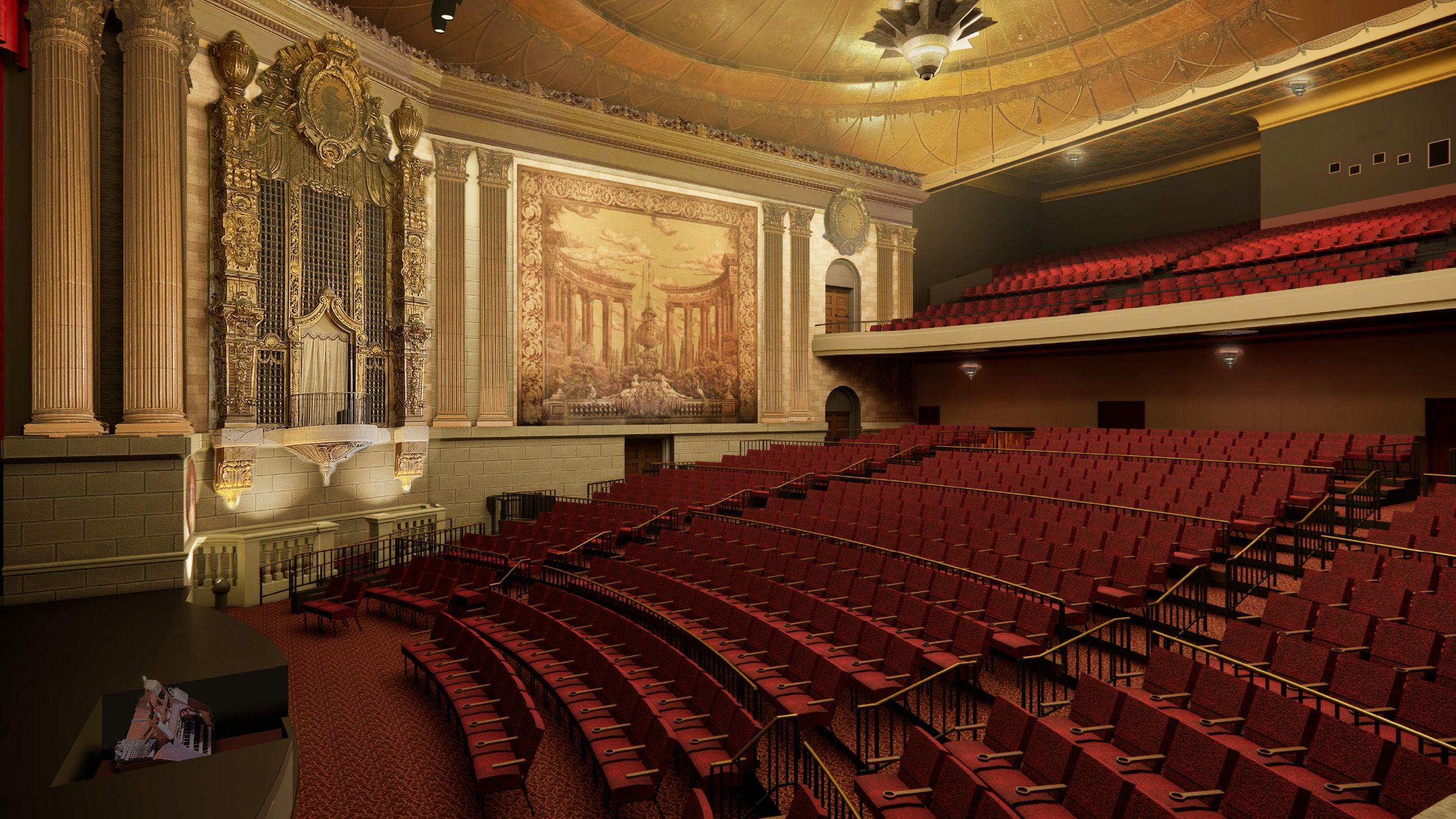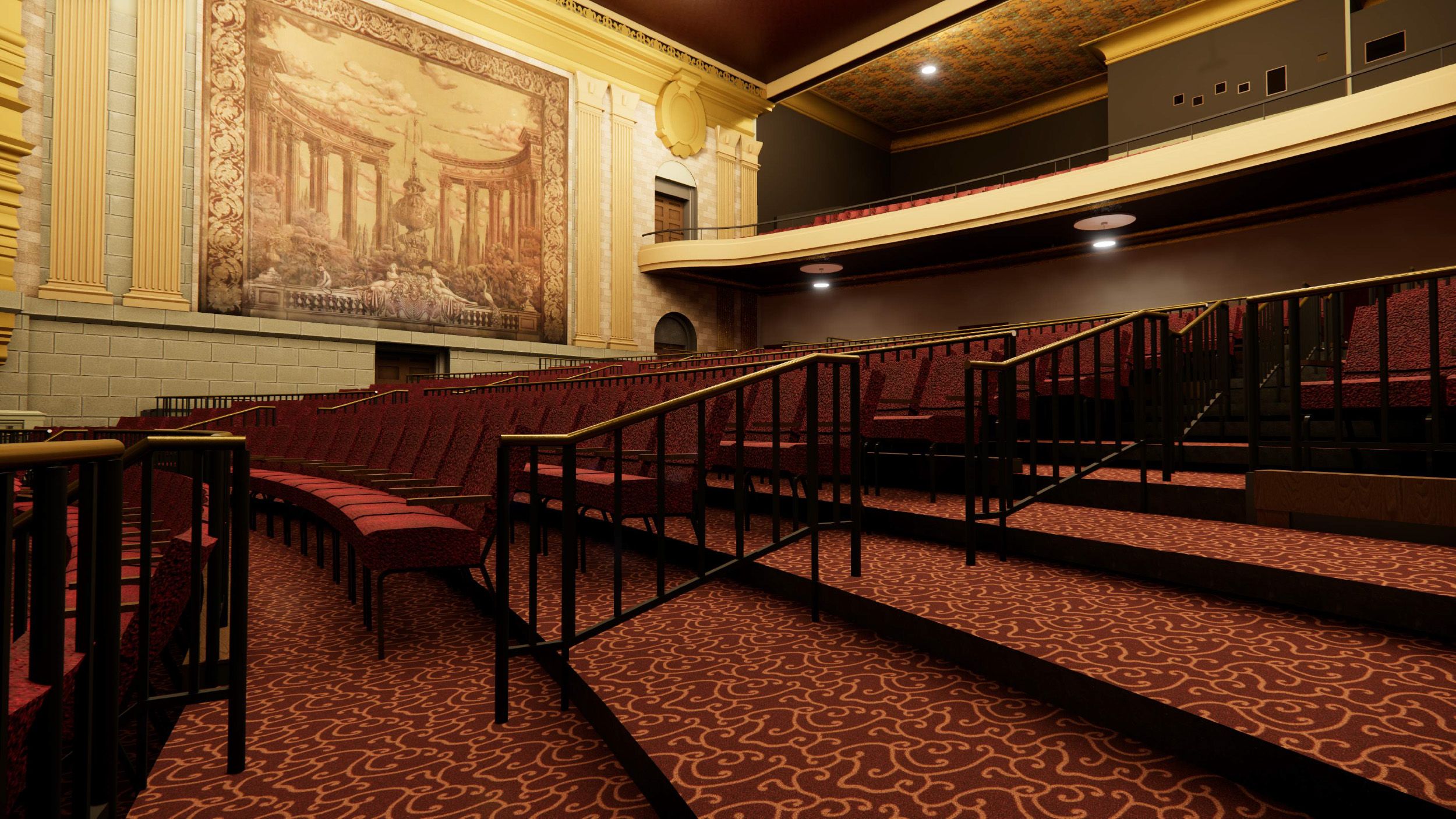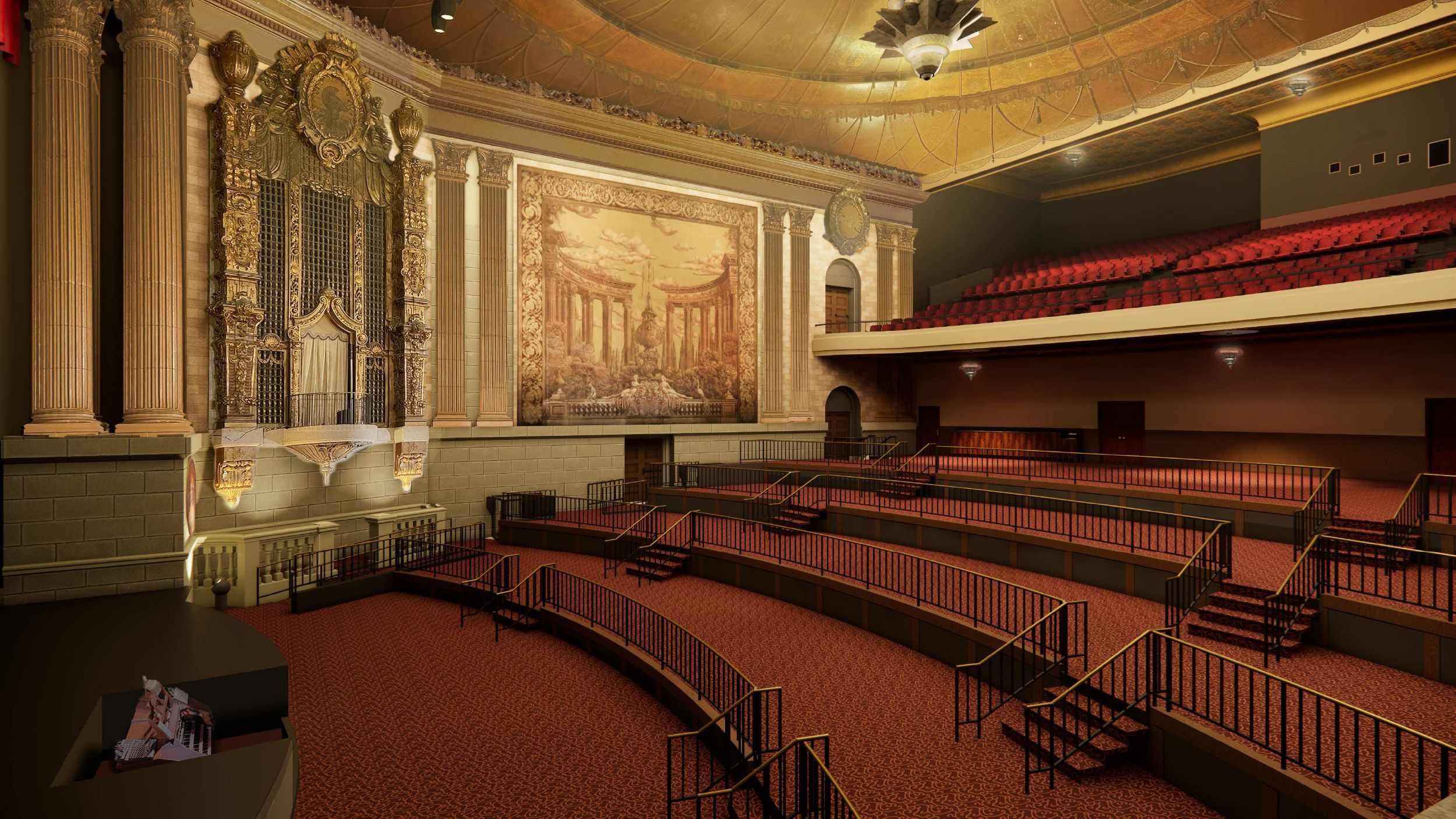Project: Purpose and Scope
In 2020, APE and the owners of the Castro Theatre, the Nassar family, began discussions about how they might work together on the Castro Theatre. The goal was to create a project that would raise sufficient capital to rehabilitate the historic features of the Castro Theatre while also allowing the Castro Theatre to evolve from its primary movie screening origins to a more flexible entertainment venue.
Many of the Castro Theatre’s historic features are deteriorating, and will need significant capital investments in order to repair and restore them. APE will invest in excess of $15 million to rehabilitate the Castro Theatre. In order to pay for these improvements, the Castro Theatre’s programming must become much more flexible. The primary components of the Project are as follows:
-
Historic Restoration. Many of the character defining elements of the Castro Theatre will be cleaned, restored, and repaired. Most importantly, the decorative ceiling, which is suffering from past inappropriate treatments, will be repaired and restored. The wall murals will be cleaned and minor repairs will be made. The decorative proscenium, which has not been visible for decades, has been recently revealed by APE and will be repaired, restored, and made visible once again. Existing historic light fixtures will be repaired, restored and relamped throughout the building. Careful restoration and relamping of the central chandelier will allow it to shine light, once again, on the decorative ceiling to expose rich colors and exquisite detailing that have been obscured for more than thirty years. On the exterior, the historic blade & marquee will be restored to their original glory.
-
Changes to Seating. The proposed new seating program for the orchestra level of the Castro Theatre allows flexible reconfiguration of the venue, permitting a more diverse set of programming — seated events and film — on stepped tiers replicating the existing sloped floor; standing room concerts, fundraisers, seated dinners and more. This added seating flexibility is critical to the proposed programing.
The existing house seats, which were installed in 2001, are replacement seats that are not original to the Castro Theatre. The new seats that will be installed will be comfortable and appropriate for seated events, including film viewing. The above video demonstrates the proposed new flexible floor configuration.
-
Venue Improvements. Currently there is no circulation of fresh air in the building and no cooling system of any kind. There are two residential-grade heating units, that are wholly insufficient to heat the cavernous venue. The Castro Theatre simply cannot continue to operate this way, especially with the current emphasis of indoor air quality and sufficient fresh air. When the Castro Theatre was built 100 years ago, modern heating, ventilation and air conditioning (“HVAC”) systems were in their infancy. Not surprisingly, the Castro Theatre was not constructed with these systems in mind. However, a new state of the art system has been designed to deliver conditioned air throughout the venue without disrupting any of the historic features.
Additionally, the venue lobby restrooms will be renovated with additional stalls to better serve event goers. Bar & Concession space will also be expanded to improve wait times.
-
Increasing Accessibility. The current rake (aka slope) of the orchestra floor is too steep for ADA accessibility. It is approximately twice as steep as the 1:12 pitch of an accessible ramp. The proposed tiers will include ADA lifts and ramps that meet current standards, allowing equal access for all patrons throughout the orchestra level.
-
New Sounds, Lights, Video and Artist Amenities. When the theatre reopens, it will feature a brand new cinema screen, state of the art lighting & sound systems. Additionally artists will be able to enjoy new dressing room spaces including an ADA accessible green room.
Upon reopening the Castro will be home to a brand new Organ custom-designed that will faithfully preserve the musical tradition of the Castro Wurlitzer and significantly expand it with 21st-century technology.
Another Planet Entertainment – Some History
Established in 2003, Another Planet Entertainment (APE) is the only independent, locally owned and operated, full-service concert production company in the San Francisco Bay Area. APE promotes events 52 weeks a year in venues from clubs to stadiums to multi-day festivals and everything in between. Since 2003, APE has produced over 10,000 events throughout the San Francisco Bay Area and Northern California.
APE exclusively operates and promotes concerts at a variety of venues, including the Greek Theatre at UC Berkeley, San Francisco’s Bill Graham Civic Auditorium, The Castro, The Independent, the Fox Theater in Oakland, the Oxbow RiverStage in Napa, and Lake Tahoe Outdoor Arena at Harvey’s. In addition to producing events at these venues, APE promotes events at venues such as Chase Center, Oracle Park, SAP Center, Bimbo’s, Palace of Fine Arts Theater, and Davies Symphony Hall to name a few.
APE has also successfully produced two award winning festivals: San Francisco’s Outside Lands in Golden Gate Park and Las Vegas’ Life is Beautiful. APE’s artist management group represents, among others, Grammy award winning artists Tycho and Billy Idol. APE has been named “Top Independent Promoter” in the United States by Billboard Magazine and “Independent Promoter of the Year” by Pollstar Magazine.
Since its inception, APE has embraced the practice of giving back to organizations who are both local and relate to music. APE has supported over 150 organizations with contributions totaling over $5.1 million. Additionally, APE has produced fundraisers for many organizations including Tipping Point, The Bridge School, and UCSF Benioff Children’s Hospital.
The founders of APE have a deep and long history in the Bay Area, having previously been with Bill Graham Presents. APE CEO Gregg Perloff has been instrumental in several historic theater renovations including the Wiltern Theater in Los Angeles and the Warfield Theater here in San Francisco. In 2004, APE began a partnership with the City of Oakland to design and renovate the Oakland Fox Theater. Closed for forty-three years, the Fox reopened in February 2009 to tremendous reviews and critical acclaim. The approximately $75 million multi-use renovation features a state-of-the-art theater with world class amenities and has provided a permanent home to the Oakland School for the Arts. At the Greek Theatre, built in 1903, capital improvement projects are ongoing and have included a seismic retrofit, stage upgrades, additional restrooms and expanding concourse areas.
Published
January 26, 2023
Last updated
July 17, 2023





